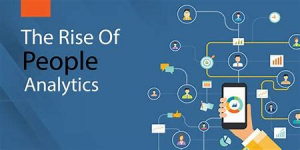Artificial Intelligence (AI) is the theory and development of computer systems able to perform tasks that normally require human intelligence, such as visual perception, speech recognition, decision-making, and translation between languages. It is important for several reasons:
- Automation: AI can automate tedious and repetitive tasks, freeing up humans to focus on more complex and creative work.
- Efficiency: AI can process large amounts of data quickly and accurately, making it possible to identify patterns and trends that would be difficult or impossible for humans to detect.
- Innovation: AI can be used to create new products, services, and business models that would be difficult or impossible to develop using traditional methods.
- Personalization: AI can personalize experiences and interactions based on individual preferences and behaviors, improving customer satisfaction and loyalty.
- Decision-making: AI can provide valuable insights and recommendations to support decision-making across a wide range of industries and applications, from healthcare to finance to logistics.
AI like ChatGPT has quickly transformed the way that work is performed in HR organizations,
- Recruitment and Hiring: AI is transforming the way organizations approach recruitment and hiring. By using AI-powered tools, HR departments can analyze resumes, evaluate skills, and assess the cultural fit of potential candidates. AI can help HR teams identify and shortlist candidates based on the job description, skills, and qualifications required.
- Talent Management: AI can help HR departments to manage and develop talent within an organization. AI can analyze employee performance data, identify skill gaps, and recommend training programs. AI can also help HR departments to predict employee turnover and create proactive retention strategies.
- Employee Engagement: AI can help HR departments to measure and improve employee engagement. By analyzing employee feedback and sentiment data, AI can identify areas where employee engagement is low and suggest interventions to improve it. AI-powered chatbots and virtual assistants can also help to provide employees with personalized support and guidance.
- Performance Management: AI can help HR departments to automate performance management processes, such as performance evaluations and goal-setting. AI can analyze employee performance data and provide objective feedback to employees, eliminating bias and subjectivity in the evaluation process.
- Compliance: AI can help HR departments to ensure compliance with regulations and policies. AI can analyze large volumes of data to identify potential compliance risks and flag any violations. AI-powered chatbots can also help to answer employees’ questions about compliance policies and procedures.
Overall, AI has the potential to transform the way we live and work, improving efficiency, productivity, and innovation in a wide range of domains.



